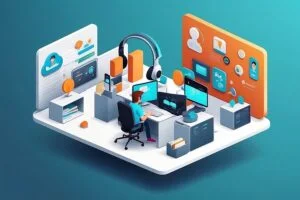RPC (Remote Procedure Call), a distributed computing paradigm, provides a mechanism for calling procedures on remote machines to be executed as if they were local. RPC facilitates the procedure execution via the remote server and as if it is local one by simplifying the communication among the different machines. It does this by treating remote method invocations as local calls, thereby removing the barrier of complex network communications faced by developers. Besides, it has become a crucial instrument in creating cost-effective and flexible solutions in a distributed architecture.
What is RPC?
RPC is a networking protocol that enables a program to call a procedure on a remote server without the need to deal with network issues. This allows developers to focus more on the application functionality which is critical for distributed systems. For example, Google's gRPC (a Google programming language) is a contemporary RPC framework that has developed drastically. It is often used in decentralized service designs due to its exceptional effectiveness and compatibility with different language outfits
Key Features of RPC
- Simplified Communication: RPC gives the network communication's detail. It makes it possible for developers to implement application logic without the communication mechanisms.
- Client-Server Model: RPC is a client-server application. The client communicates a command to the server, which executes the command and sends back a response.
- Stubs and Skeletons: Clients adopt stubs as defined on their end while servers take skeletons as defined on their end and then maintain the communication between the client and server respectively.
- Data Conversion: RPC is how clients and servers convert data formats and thus ensure that both ends interpret the data correctly.
How RPC Works?
RPC is a process of communication via exchange of commands over a network between a client and a server.
Client Stub: The client calls a local stub procedure, which packs the parameters into a message and sends it to the server.
Server Stub: The server stub gets the message, vital signs the parameters, and executes the actual procedure on the server.
Execution: The server runs the procedure and returns the result to the client stub.
Client Stub: The result received by the client stub is then sent back to the client program.
Types of RPC:
There are two types of RPC’s;
- Synchronous RPC: Here the client must wait for the server to complete the request processing, and thus a response is sent back. In this instance, the client guarantees that the output is received before the other assignments are executed.
- Asynchronous RPC: In this case, the client does not wait for the server's reaction and instead carries on processing other tasks. This is useful for forcing the improvement of the efficiency and responsiveness of applications.
Benefits of Using RPC:
- Transparency: RPC lends itself to transparency, through which remote procedures are called, making it even simpler for developers to distribute applications in a timely manner.
- Efficiency: Ultimately, this results in a great deal of time and resources being saved, as it is possible to develop and maintain distributed systems with a leaner, and thus more efficient, approach, by ensuring that communication details are abstracted using RPC.
- Scalability: RPC underpins the innovation of scalable applications by the instant and uninterrupted linkup of distinct parts or services that are within different computers or machines.
Conclusion:
Remote Procedure Calling (RPC) is one of the elementary protocols of distributed computing. It provides an intuitive and easy solution to run the procedures on remote servers. By abstracting complex network communication, RPC enables developers to design distributed systems that are both scalable and fault tolerant. Whether you are developing a small-scale application or a large distributed system, understanding and using RPC enhances your development process significantly.
For further information on RPC, contact us at KnowledgeNile!
Also Read:






